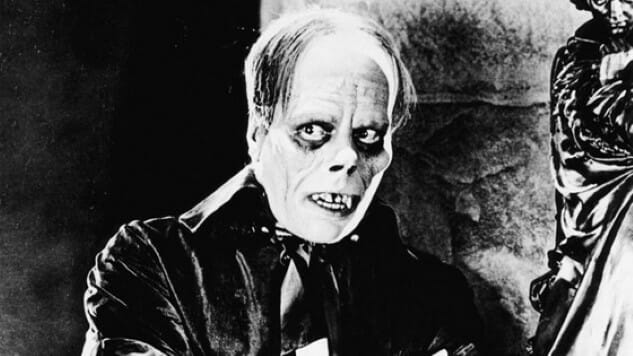Introducing Endless Mode: A New Games & Anime Site from Paste
This post is part of Paste’s Century of Terror project, a countdown of the 100 best horror films of the last 100 years, culminating on Halloween. You can see the full list in the master document, which will collect each year’s individual film entry as it is posted.
The Year
The Hunchback of Notre Dame made Lon Chaney Sr. into a “horror” star in 1923, but it’s Phantom that really solidifies the perception, at least as far as our pop-cultural memory is concerned. In truth, Chaney was cranking out genre movies at a ridiculous pace in this particular era—every year seems to have a handful of Lon Chaney starring vehicles. In 1925, he also stars in future Dracula and Freaks director Tod Browning’s The Unholy Three, and in another low-budget horror flick called The Monster, practically cornering the entire genre to himself. Never again would horror be so dependent upon a single face, so it’s almost no wonder that Chaney was the “Man of a Thousand Faces”—he literally had to be.
As for the rest of 1925, there’s not a ton to recommend. The Lost World is an early achievement in stop-motion dinosaur effects, but is a bit of a stretch to label as horror. Maciste in Hell is an interesting adaptation of Dante’s Inferno-style hand-wringing, but good luck finding a decent copy of it. Phantom stands head and shoulders above everything else.
1925 Honorable Mentions: The Unholy Three, The Monster, The Lost World, Maciste in Hell
The Film: The Phantom of the Opera
Director: Rupert Julian
Where The Hunchback of Notre Dame cares more for the humanity and pathos of Chaney’s Quasimodo, The Phantom of the Opera is a more purely entertaining tale of melodramatic obsession and gothic grandeur. Here, as the hideously disfigured Erik, Chaney is much more regal, commanding and arch—a vaudeville stage villain with a twist of “mad scientist.” Where the pitiable hunchback crept and cowered, Erik imperiously believes that he’ll live to see the world pay for everything it’s done to him—and hold his dream woman in his thrall, at the same time. And all from the comfort of a subterranean sewer bordello, at that.
Actress Mary Philbin portrays would-be opera prima donna Christine Daaé with a combination of ambition and naivete that make her somewhat unsympathetic, seemingly a sly commentary on how the ugly nature of her desire for fame and influence makes her every bit the “monster” that The Phantom is under his mask. To wit, she’s perfectly happy to accept the assistance of her mysterious benefactor, even when that help extends into the realm of outright murder. Only after seeing under the mask of her new beau does Christine decide that there seems to be anything wrong with the direction her life is taking—and by then, of course, it’s far too late, and she’s become the Phantom’s prisoner.
Certainly, The Phantom of the Opera is the most well-remembered and treasured of the pre-Dracula Universal horror films, owing to a few key factors. The sets are particularly spectacular for the time period, from the majestic center stairway and foyer of the opera house, home to the striking, two-strip Technicolor “Bal Masqué” sequence, to the watery catacombs that hide the Phantom’s secret lair. And of course the film remains preserved in the memories of film historians thanks to Chaney’s iconic face itself, another testament to the actor’s skills in designing his own makeup. The sunken eyes, upturned nose and jagged teeth of the Phantom give him an emaciated, skull-like visage that should always be considered an integral part of the lineup of Universal Monsters, although The Phantom is now sometimes forgotten among that particular pantheon. To leave him out would be a mistake, especially given how Chaney’s face reportedly had patrons screaming and fainting in the aisles in 1925.
Indeed, the Phantom proves to be one of horror’s most devilish early icons, a mastermind who wraps the rest of the film’s characters around his finger with relative ease. The film’s hapless protagonists attempt to rescue Christine from the villain’s clutches while falling prey to an array of fiendish traps and mechanical devices, eventually succeeding only due to the Phantom’s last-minute act of mercy. The audience is left with no question of who the superior mind belongs to—the Phantom. This “horror puppetmaster” archetype would echo through the ages, from the mad doctors portrayed by Karloff and Lugosi in the 1930s, to Vincent Price’s Abominable Dr. Phibes, to Saw’s own Jigsaw Killer. All bear the grandiloquent mark of the Phantom.
Jim Vorel is a Paste staff writer and resident horror guru. You can follow him on Twitter for more film and TV writing.
